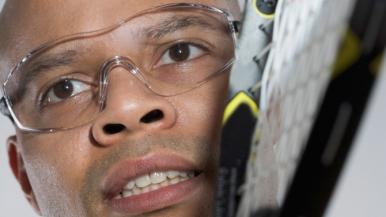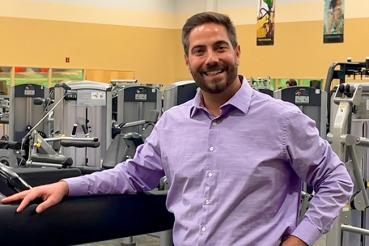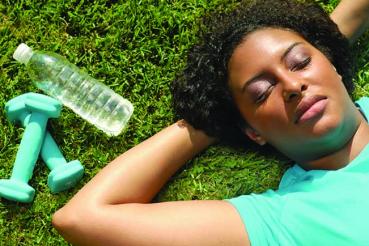If you think your glasses are going to protect you from racquetballs and flying hockey pucks, think again.
"One of the biggest misconceptions people have is that their glasses are protective, and they're really not. In fact, people who play sports wearing regular street eyewear are probably putting their eyes at a greater risk," says Kirk Packo, MD, an ophthalmologist at Rush University Medical Center, which has approximately 30 years' experience providing eye care for the Chicago White Sox and Chicago Bulls.
Glasses, particularly the small-profile frames that have become popular, are easily broken and can be driven into the eye during athletic competition. Some of the most serious injuries Packo sees occur when glasses break, lacerating the eye.
For optimal eye protection, Packo recommends wearing sports goggles while playing sports that carry a high risk of eye injuries, such as paintball, boxing, baseball, racquetball, hockey and basketball.
If you wear contact lenses for vision correction, either swap them for prescription goggles during sports or wear nonprescription goggles over your contacts to ensure both 20/20 vision and protection against injury.
Goggle tips
Packo offers the following tips for choosing and wearing sports goggles:
1. Get goggles with polycarbonate lenses, which are 20 times stronger than the type used in everyday glasses.
2. Goggles should have few moving pieces, such as hinges, to minimize the parts that can snap off.
3. Proper fit is a must. Make sure the padding inside the sides of the goggle rests flush with the face and the eyes are centered both horizontally and vertically in the lens area.
4. When buying goggles for kids, don't select a pair that’s too large so the child can "grow into" them, as you might do with clothing. Likewise, make sure your child hasn't outgrown his or her goggles from one year to the next. In addition to not providing adequate protection and vision, ill-fitting goggles may be uncomfortable, tempting kids to not wear them at all.
Get goggles with polycarbonate lenses, which are 20 times stronger than the type used in everyday glasses.
5. Contact lense wearers may prefer contoured, wraparound goggles, which offer the added benefit of protecting against irritants such as sweat, wind and dust.
6. Make sure to update the prescription on your goggles every time the prescription on your glasses changes significantly.




